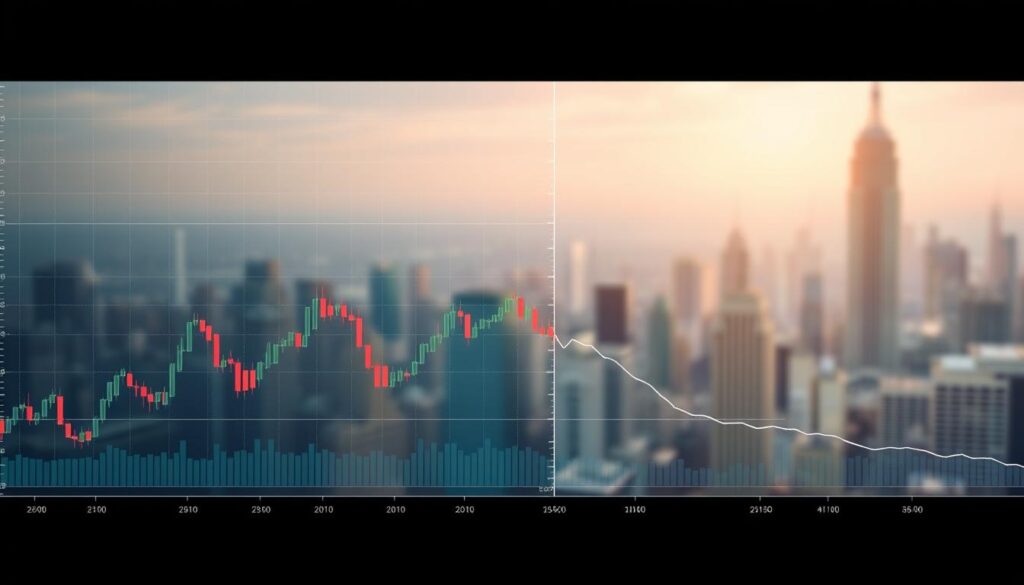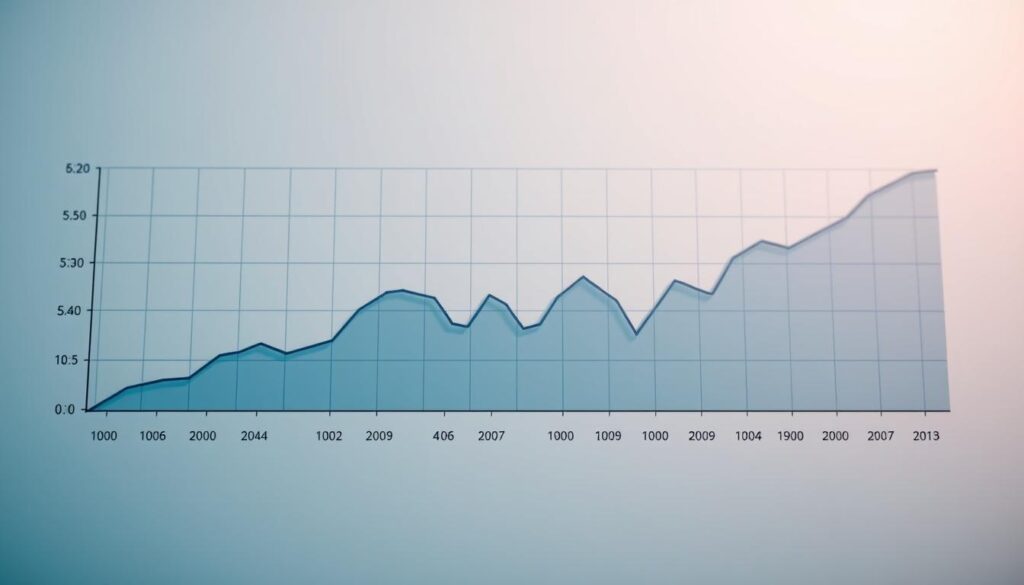Now Reading: Global Crypto Market Capitalization Total Value Insights
- 01
Global Crypto Market Capitalization Total Value Insights
Global Crypto Market Capitalization Total Value Insights

Understanding the big picture is crucial for anyone involved with digital assets. This guide introduces a key metric that provides a snapshot of the entire ecosystem’s health.
This measurement offers a bird’s-eye view, allowing you to gauge overall sentiment quickly. It’s more than just price; it reflects the scale and dominance of various projects.
Prepared traders distinguish themselves by seeing the broader landscape. Grasping this total valuation is fundamental to developing that comprehensive perspective.
A rising figure often indicates growing confidence among investors in the space. Platforms like CoinMarketCap track this data, giving you access to real-time information. This guide will explore how to calculate, interpret, and apply this knowledge for smarter decisions.
Understanding the Crypto Market Landscape
To truly grasp the scale of any digital asset, you need to look beyond its individual price tag. The most reliable metric for this is market capitalization.
What is Market Capitalization in Crypto?
In simple terms, a coin’s market cap is its current price multiplied by the number of coins in circulation. This calculation gives you the project’s overall worth.
This figure lets you compare different assets fairly. A low-priced coin with a huge supply can have a larger cap than a high-priced one with a small supply. It prevents the common mistake of chasing “cheap” coins.
However, this metric has unique aspects in the digital world. Factors like token burns and locked coins affect the circulating supply, which directly influences the valuation.
| Feature | Stock Market Cap | Crypto Market Cap |
|---|---|---|
| Supply Control | Relatively Stable | Dynamic (Burns, Locks) |
| Price Volatility | Generally Lower | Often Extreme |
| Basis of Value | Company Assets & Earnings | Network Utility & Speculation |
The Role of Digital Currencies in Today’s Economy
As digital currencies gain acceptance, their market cap has become a standard for evaluation. Institutional investors use this metric to assess the size and stability of different cryptocurrencies.
Understanding this concept is fundamental to navigating the modern financial landscape where these assets play an increasingly significant role.
Key Components of Total Market Cap in Crypto
The foundation of any cryptocurrency’s valuation lies in distinguishing between different supply metrics. Understanding these distinctions prevents misleading assessments of a project’s true scale.

Circulating Supply vs Total Supply
Circulating supply represents the number of coins currently available for trading. This excludes tokens that are locked, burned, or reserved by developers.
Total supply includes all coins that exist, even those not accessible to the public. Market cap calculations always use circulating supply for accuracy.
This approach provides a realistic picture of value actually in circulation. Maximum supply, like Bitcoin’s 21 million coin limit, creates scarcity that influences price.
Impact of Token Burns, Locked Coins, and Price Volatility
Token burns permanently remove coins from circulation, reducing supply. This can increase scarcity and potentially drive up the price per coin.
Locked coins in smart contracts or vesting schedules aren’t part of circulating supply. Their eventual release can significantly impact the market cap.
Price volatility combined with supply changes creates dynamic valuation scenarios. Projects with larger total supplies often have lower per-coin prices.
Mastering Crypto market capitalization total value
The true power of market data emerges when you learn to interpret it strategically. This skill transforms numbers into actionable insights for better portfolio decisions.
Interpreting Data for Informed Investment Decisions
Understanding a project’s relative size starts with its market cap. Bitcoin’s dominant position serves as the benchmark against which other digital assets are measured. This comparison helps assess risk levels accurately.
Smaller cap coins typically show higher volatility. They attract short-term traders but carry more risk for long-term holders. Tracking the overall ecosystem’s total value reveals broader trends and investor sentiment.

| Platform | Primary Focus | Key Features | Best For |
|---|---|---|---|
| CoinGecko | Comprehensive Data | Price, volume, fully diluted valuation | All-around analysis |
| CoinMarketCap | Rankings & Charts | Historical data, market cap rankings | Quick comparisons |
| Messari | Research Depth | Tokenomics, supply breakdowns | Fundamental analysis |
| CryptoRank | Early-Stage Projects | Investor data, vesting schedules | New opportunities |
Utilizing Tools and Platforms like CoinMarketCap and CoinGecko
These platforms automate complex calculations, letting you focus on analysis. They provide real-time data to support your investment decisions. Filtering by market cap size helps identify suitable opportunities.
Volume trends and historical charts reveal patterns across the entire crypto landscape. This comprehensive understanding of crypto market capitalization forms the foundation for strategic portfolio building. The right tools make informed investment choices much simpler.
Identifying Risk and Reward Through Market Caps
Market capitalization serves as a powerful compass for navigating the risk-reward landscape of digital currencies. This metric helps you align your choices with your personal financial goals and risk tolerance.
Assets are typically grouped into three main categories based on their valuation. Each category offers distinct characteristics that appeal to different types of investors.
Evaluating Coin Maturity and Market Sentiment
Large-cap digital assets, valued over $10 billion, represent the most established projects. Bitcoin and Ethereum fall into this group, offering strong adoption and high liquidity.
These investments provide lower risk and moderate reward potential. They are ideal for those seeking stability and long-term growth.
Mid-cap coins valued between $1-10 billion show promising potential without market dominance. Projects like Curve DAO balance active development with growing communities.
This category offers medium risk with high reward potential. It represents a middle ground between safety and growth opportunity.
Small-cap assets under $1 billion are newer or niche projects. Moonbeam and Verasity exemplify this category with limited presence and frequent price swings.
These carry high risk but offer very high reward potential. They suit speculative investors searching for breakout opportunities.
A higher market cap generally signals trust, maturity, and lower risk. Smaller cap coins are more volatile but can deliver exponential growth that larger projects cannot match.
Practical Guide: Using Market Cap to Make Informed Trades
Knowing how to apply market cap data directly to your trading strategy separates amateurs from professionals. This hands-on approach turns a theoretical metric into a powerful tool for your portfolio.
Let’s break down the process into clear, actionable steps.
Step-by-Step Calculation of Market Cap in Crypto
The formula is straightforward: Market Cap = Current Price × Circulating Supply. This gives you the total value of all coins in circulation.
For example, if a digital asset has a price of $65,000 and 19.7 million coins available, its cap is approximately $1.28 trillion.

Another coin priced at $100 with 25 million units in circulation would have a $2.5 billion valuation. While understanding this math is key, you’ll rarely calculate it manually.
Platforms like CoinGecko provide real-time, accurate figures instantly.
Integrating Other Metrics: Trading Volume and Liquidity
Market cap alone doesn’t show real activity. You must also check trading volume.
High volume indicates healthy buying and selling interest. A project with a large cap but low trading volume is a red flag.
It suggests a lack of real market interest. Liquidity is also crucial.
Low liquidity means you can’t trade large amounts without affecting the price. Always use multiple metrics to make informed decisions.
Advanced Strategies for Crypto Trading and Investment
Moving beyond basic analysis requires integrating multiple data points to form a comprehensive investment picture. This approach separates casual observers from serious participants in the digital asset space.
Leveraging Market Trends and Historical Data
A project’s valuation often reflects broader sentiment and establishes realistic growth expectations. Higher figures typically indicate greater trust and maturity among participants.
The mathematical relationship between token count and price potential is crucial for informed investment decisions. A digital asset with 100 billion units needs significant capital inflow to reach higher price levels.

Breaking into top rankings creates positive momentum through increased visibility and platform listings. This visibility often drives further investor confidence and trading activity.
Different valuation levels attract distinct investor profiles. Smaller projects appeal to those seeking rapid growth but carry higher uncertainty and lower liquidity.
Avoid the pitfall of confusing circulating valuation with fully diluted figures. The latter includes tokens not yet available, potentially masking future dilution risks.
Successful strategies combine valuation metrics with historical patterns, trading volume, and supply dynamics. This holistic view supports smarter decisions in the digital asset ecosystem.
Conclusion
Mastering the valuation of digital assets requires understanding both the strengths and limitations of key metrics. Market capitalization provides an essential picture of a project’s scale and relative position.
However, this metric should never be your sole guide. It reveals the value tied to circulating coins but not their real utility or development progress.
Always combine market cap analysis with trading volume, tokenomics, and community activity. This comprehensive approach helps you make informed investment decisions rather than guesses.
While some criticize capitalization as a stock market relic, it offers objective data in a hype-driven space. Understanding its proper context empowers you to navigate the digital asset landscape with confidence.
















